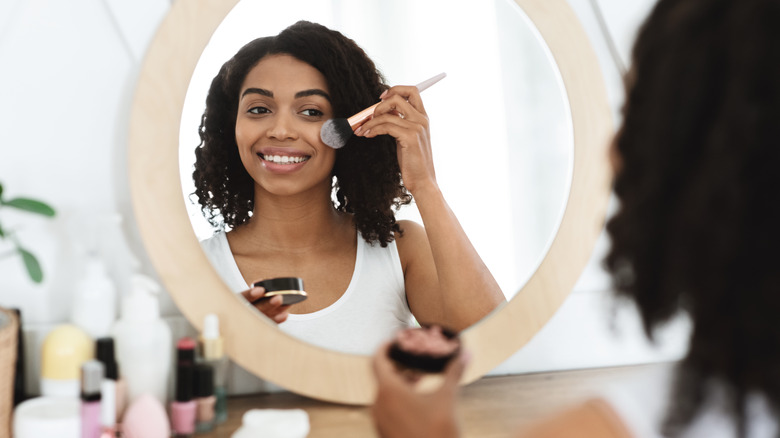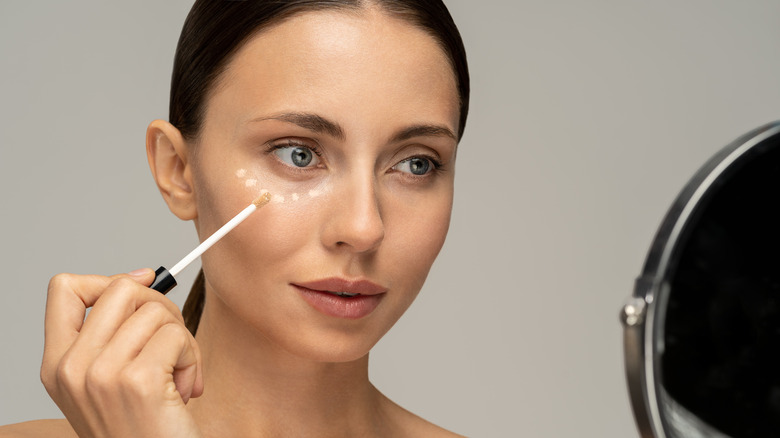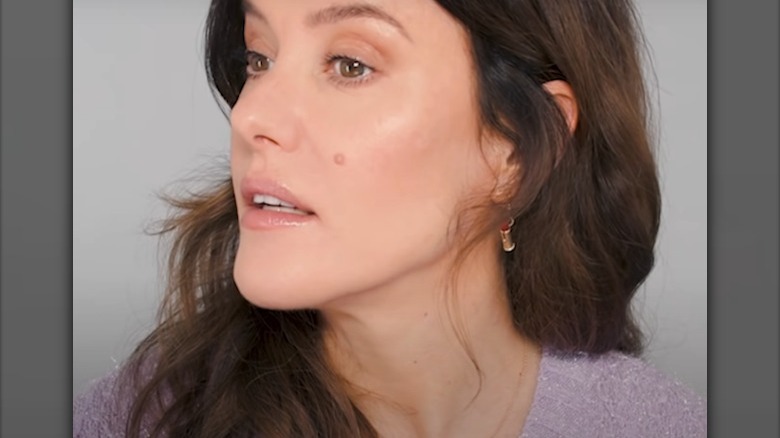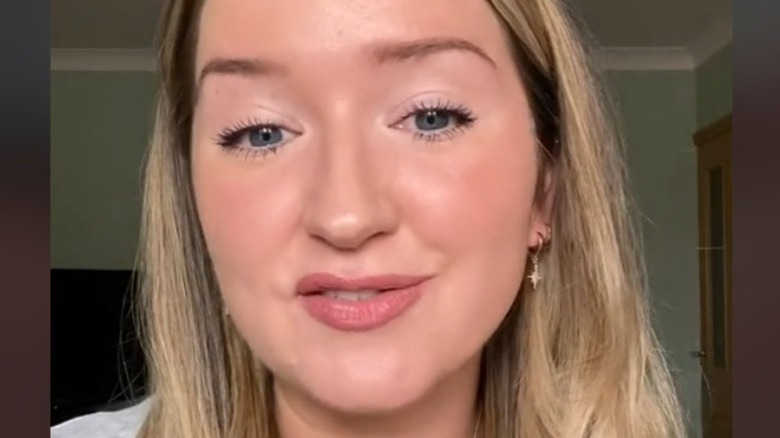What To Know About The Patchworking Makeup Technique
We may receive a commission on purchases made from links.
If you're ready for a new approach to beauty, patchworking may be an option to explore. As pro makeup artist Lisa Eldrige wrote on Instagram in January 2022, this technique is "an intuitive way of applying various products and textures with different techniques, to selective areas of the face, then seamlessly melding the textures together, resulting in your most naturally perfected complexion yet." The beauty mogul also referred to patchworking as "one of [her] signature application techniques."
In other words, with patchworking, each person applies various products to their skin in specific areas where they have different needs, then blends. This makes the approach customized and effective for almost everyone. Like any other makeup method, patchworking requires studying and completing hands-on practice in order to perfect the process. But, when beauty fans remain dedicated and learn how to use patchworking to their benefit, the results can be well worth it. Read on to find some tips about the patchworking makeup application process so you too can add it to your routine.
Patchworking is all about you
Patchworking is a system that is meant to be tailored to the specific needs of each person. Since everyone has unique skin tendencies, the products one applies and where on their face they apply them will vary. As explained on the Beauty Review site, patchworking goes deeper than just using a one-size-fits-all foundation on the face and moving on with the rest of your makeup routine. Instead, one can put on mattifying products that will tame oily spots on the face, and dry areas can be improved with moisturizers or serums.
If you're just getting to know your skin, this is something that can be learned in time. On day one, you may have the right items to patchwork like a pro, or you could have to explore what the best makeup products are for you. One thing to keep in mind is your skin type. CeraVe explains that one's skin type can be discovered by observing how much oil the face makes. The five skin types are oily, dry, sensitive, combination, and normal. In addition, resources like Sephora's foundation guide can help in finding the perfect matches for your skin (via Sephora).
Using the patchwork method creates a natural glow
It's true that there might be several products necessary for patchworking, but this shouldn't be obvious to anyone but you. When you are finished applying makeup using the patchwork method, the products you used should seamlessly blend together and create a natural-looking glow. In an early 2022 YouTube video posted by makeup mogul Lisa Eldridge, the beauty guru explained that, during the process of patchworking, "you're sort of sewing together this patchwork quilt, but ... the end result is that everything just looks like it was supposed to be there, and it's meant to be there." Just as important as it is to find the right items for your skin, it is equally important to be able to put them on and blend them until your final makeup look appears effortless.
Eldridge used many products throughout her video, including a gel cream, serums, a highlighter, a foundation, concealer, loose powder, and blush. During filming, she applies each product with precision and blends them thoroughly so that the complexion appears natural and healthy. Overall, a harmonious makeup look should result from patchworking.
Patchworking can cover all of your makeup needs
With patchworking, you can end up with a makeup look that highlights your best skin qualities and conceals the rest. The best part of patchworking is that it allows you to maintain full coverage exactly where you require it on your face. Concealing products like the fan-favorite Nars Radiant Creamy Concealer, or the more affordable Maybelline Instant Age Rewind Eraser Concealer, can be used sparingly and last much longer with a patchwork routine.
In January 2022, TikTok user @rosegallagherbeauty demonstrated this through a patchwork technique tutorial to cover redness on her face. Her look was inspired by Lisa Eldridge's patchwork strategy. Using an illuminator, then a green color corrector only over redness, followed by foundation, under-eye concealer, blush, and powder, Gallagher was able to utilize the method to hide ruddiness and spotlight her flattering features. "I'm really happy with that. My skin feels really fresh. I've still got a decent level of coverage," she said.
So, whatever your skin needs may be, patchworking can likely fulfill your makeup goals.



